In 1993, an oddly deformed turtle was discovered in Missouri. At some point in her early life, she had become ensnared in a plastic six-pack ring that stayed hooked around her midsection for years. As she developed, her shell grew around the ring so that, by the time she was found, she was roughly peanut-shaped and had chronic problems with her internal organs. Because of this poor creature’s shape, the people at the Missouri Department of Conservation named her Peanut.
Peanut is not a big fan of plastic waste. Neither, more or less, are we humans, but that doesn’t stop us from creating more than 300 million tons of waste plastic every year.
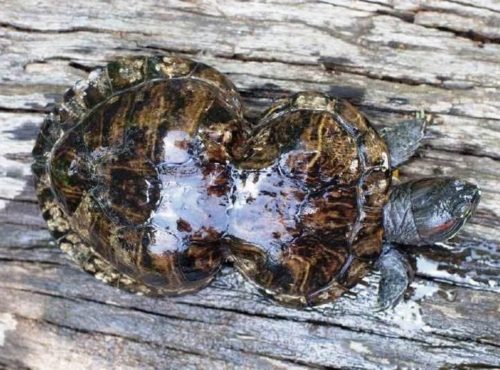
Humanity seems to have a love/hate relationship with plastic. We love it because it’s abundant, easily made and manipulated, and costs less than its competition. But it’s also a major source of environmental problems. Plastic waste pollutes our air, lands, oceans, animals, and even our own bodies, so it seems silly to keep using it.
But we’re hooked. We’re using plastic everywhere. It’s in straws, toys, computers, and cars. It’s woven into our clothing, infused into our face washes, and mixed into our chewing gum. Plastic keeps our frozen dinners sealed off and our leftovers fresher longer.
It can be hard to say no to plastic, but refusing to exercise caution could lead to health and quality-of-life problems for every living thing on Earth.
Plastics: Helping or Hindering?
Plastic production began more than 60 years ago, and with each passing year, the problems surrounding it become more severe. According to Science Daily, since the start of plastic production in the early 1950s, nearly half the total plastic produced was made in the last 13 years alone. Biologicaldiversity.org says more plastic was manufactured in the first 10 years of this century than in all the years leading up to 2000. Nearly 299 million tons of plastic was produced in 2013, a 4 percent increase from the previous year, says WorldWatch Institute.
That’s a lot of plastic. And what are we doing with it? The real question might be, what aren’t we doing with it? Plastic is in medicine, transportation, electronics, and more. We make heart valves, knee and hip joints, and artificial corneas from plastic to improve lives. We do a lot of good with plastic, but it comes with a bad side, too.
The material itself can be incredibly functional, but our disposal of it isn’t. Instead of recycling plastic, we throw it out and make more. We play the “out of sight, out of mind” game. But throwing plastic away doesn’t make disappear, it only shifts it to a different location where it accumulates to dangerous levels?
Plastic has an amazing power to withstand natural forces trying to break it down. Sun and salt can assist in its fragmentation, but these pieces create an ingestion hazard. Even attempting to chemically break down the complex material we call plastic is challenging. National Geographic states that it takes more than 400 years for plastic to completely degrade; therefore, nearly every bit of plastic ever made still exists.
The Damaging Effects of Plastics
Plastic Is a Nonrenewable Resource
Plastic is a petroleum product. The Pacific Institute, a nonprofit research organization, found that producing plastic bottles for the American population took 17 million barrels of oil in 2006. That’s enough to fill 67.5 Olympic swimming pools, and it doesn’t even include the oil it took to distribute those bottles everywhere! Plastic Pollution Coalition reports that the creation of plastics accounts for an estimated 8 percent of yearly oil production throughout the world. Oil is a nonrenewable resource, and the prominent use of it in plastic production only speeds the depletion of our supply.
Plastic Accumulates Quickly
Before plastic, we made things from steel, glass, and wood. These other products were — and still are — made to be used and reused for years, but plastic products are by and large designed to be used once and then thrown out. Discover Magazine estimates that plastic makes up 16 percent of all municipal waste in landfills and is the culprit of between 50 and 80 percent of litter on beaches. Roland Geyer, a professor specializing in industrial ecology at the University of California, Santa Barbara, discovered that half of all plastic is trash less than a year after its manufacture.
BBC News states, “Drink bottles are one [of] the most common types of plastic waste. Some 480 billion plastic bottles were sold globally in 2016 — that’s a million bottles per minute.” And where do these bottles and so much more end up? In our oceans.
Plastic Damages Ocean Ecosystems
National Geographic estimates that “eight million tons of plastic are dumped into the ocean each year,” deposited by rain, wind, waterways, and careless people. That’s roughly the equivalent of “five grocery bags per every foot of coastline around the globe,” says Jenna Jambeck, environmental engineer at the University of Georgia.
That means trouble for all kinds of sea creatures, including Peanut’s saltwater siblings.
The Sea Turtle Conservancy says sea turtles are majorly affected by plastic debris. Submerged plastic bags are mistaken as jellyfish, a main food source for turtles. These animals are more sensitive to plastic consumption than other animals due to their digestive structure: Inward-facing spines near the throat prevent the possibility of regurgitation, which might otherwise flush out toxins, and plastic trapped in the stomach prevents the turtle from digesting correctly. Also, as marine debris decomposes within the turtle’s body, gases created by the breakdown force the turtle to float toward the surface, making it more susceptible to starvation or predation.
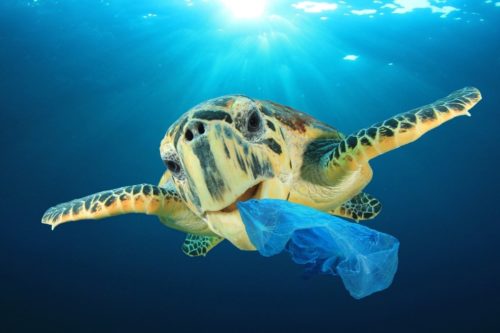
Recent research suggests that the number of animals found with plastic in their stomachs is increasing. Other sea animals risk choking, drowning, or dying of starvation when they can’t find their way out of the material. Sea birds, too, are imperiled by plastic waste. National Geographic explains how sea birds get confused about what is and isn’t food in the middle of the ocean:
Algae are consumed by krill, a small crustacean that is the primary food source for many sea birds. As algae breaks down naturally in the ocean, they emit a stinky sulfur odor known as dimethyl sulfide (DMS). Sea birds in the hunt for krill have learned that the sulfur odor will lead them to their feeding grounds.
Plastic floating on the surface of the ocean provides a place for algae to rest, creating a build-up of DMS around that plastic pollution. This tricks seabirds into consuming the plastic, thinking it’s a meal. If they eat enough of it, they feel full and don’t continue to feed, resulting in starvation or malnutrition and often leading to death. Plastic pollution can also block or damage an animal’s digestive and excretory systems, preventing its internal organs from functioning properly.
The Toxins in Plastic
Toxic chemicals from plastics can be absorbed into the animal that swallows it, which means those toxins enter our food supply. A study reported by Natural Society found that fish that consumed tiny particles of plastic had increased tumor development and fat cells in the liver region. This issue can move up through the food chain to whatever eats the fish — including to our dinner tables.
Even before it becomes a waste issue, plastic is an environmental pollutant from its very birth. Not only are plastics made from the burning of fossil fuels, which releases toxins, but the process of extracting these fuels also releases poisonous fumes.
The Pacific Institute states, “the manufacture of every ton of PET produces around 3 tons of carbon dioxide.” PET is polyethylene terephthalate, a plastic used to create containers for food, clothing, and liquids. According to Statista, 41.26 million tons of PET were produced in 2014, and that number is expected to rise to 73.39 million by 2020.
Financial Costs of Plastics Pollution
Plastic has also taken a financial toll on many countries. Research reported by Takepart.com estimates the total price of plastic pollution in our oceans at $13 million a year. Great Britain, the United States, Brazil, and India are all missing out on millions in tourist dollars as the litter along the coastline keeps vacationers away in droves.
Someone has to pay for the cleanup, when there is a cleanup, and it often falls on charitable organizations who want to help and on the government of the affected cities.
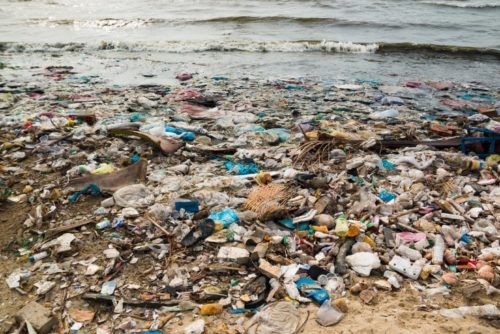
What Is Being Done?
Considering all the things we can do with plastic, it seems too good to be true, and maybe it is. Grassroots movements have improved the plastic problem, but these have produced only minor successes. Plastic trash still litters both land and sea, and toxins still thrive in the air we breathe.
The nonprofit organization Ocean Cleanup plans to launch a five-year project in the near future that aims to clean up half of the Great Pacific Garbage patch, a large abundance of plastic trash caught in the middle of the Pacific Ocean by a strong, swirling current. Ultimately, they hope to have an ocean free of plastic by 2050. The Ocean Conservancy, too, has made efforts to clean up beaches so waves can’t slither up the shore and drag trash back into the ocean’s depths.
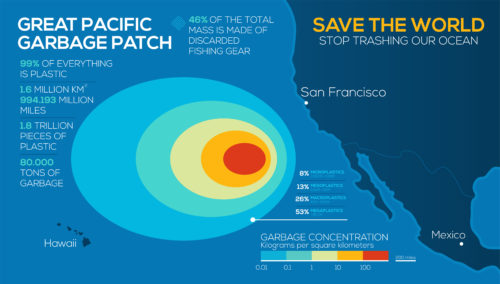
(Click to Enlarge)
In Mumbai, India, the world’s largest ongoing beach cleanup is still happening each Sunday. The movement started in October 2015, when one man, Afroz Shah, decided he was tired of his favorite beach being covered with plastic. He has been gathering more volunteers each week to rid the 2.5-kilometer-long Versova Beach of plastic, which continues to accumulate.
People are becoming more and more aware of our plastics problem, and some of them, like Shah, are doing something about it. It took only one man deciding to make a change to start this revolution on Versova Beach. Many people aware of this problem think no one, singular person can make a difference. Yet every movement has to start somewhere; why not with you?
What You Can Do Right Now
Joining the effort can be as simple as leaving the drinking straw where it is the next time it’s available. Or grabbing your reusable bags the next time you go to the grocery store. Carry a reusable water bottle instead of buying plastic bottles every time. If you can’t avoid plastic, simply holding onto your drink bottle a little longer so you can throw it in a recycling bin instead of the trash can help.
Every single piece of plastic you keep out of our rivers and oceans is a small but important victory. After all, it was only a single piece of plastic litter that drastically altered Peanut’s life.
Luckily, Peanut’s story has a happy ending. After she was found, she was sent to a zoo in St. Louis, where the plastic ring was finally removed. Peanut now lives a relatively happily life in the Busch Conservation Area in St. Charles, Missouri, and is getting along fine. But her shell disfigurement and poor organ development can never be reversed. She stands today as a reminder to us all of the cruel consequences involving rampant, thoughtless plastic pollution.
Become a Saturday Evening Post member and enjoy unlimited access. Subscribe now
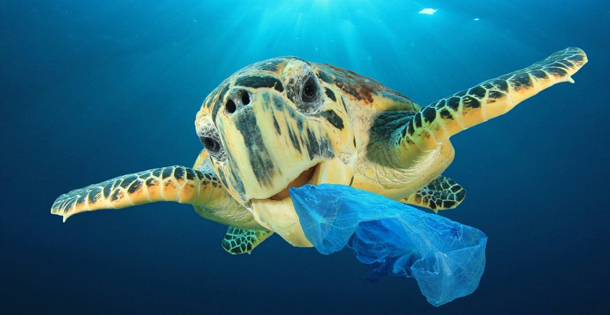
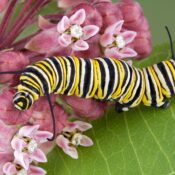


Comments
Great content, good read, informative and well written. Learned a lot today.
The picture of that beautiful sea turtle innocently attempting to eat what he or she thinks is a jellyfish, but in fact is a plastic bag is SO wrong, infuriating and heartbreaking. It’s messing with their internal organs, digestion and more. How much more fundamental to an aquatic (or any animal) can you get?!
Trying to fix this is going to be very difficult and will require everyone on an international level be on the same page. This is really a complementary feature to ‘Oceans On the Edge’ earlier this year in both severity and urgency.
“Convenience” has come with a high price regarding plastics, and also for people’s health. BPA-free plastic water bottles have become more common fortunately, but that still leaves the bottles themselves. I drink Crystal Geyser and make sure it’s taken to the local recycle center once I’ve gotten a few large bags full. I’ve done so for years.
On a related note, the constant disposing of tech devices with their toxic components have been dumped in Asia for years causing terrible health problems there. And for what? The latest “upgrade” model smartphone model the tele-communications industry is brainwashing sheeple into thinking they have to have? Sadly yes, unfortunately!
We’re paying a high price for the “convenience” of plastic, which by the very nature of BEING plastic, says “disposable”. Things used to be made to last also, and taken to the repair shop. I have my Mom’s 1954 GE electric iron that I took to California Electric some years back to have the frayed cloth cord and plug replaced.
It works great, getting really hot very quickly. I still iron for a perfect look as needed, of course. Hard to believe now it was made made in the U.S., at a GE plant in Ontario, Ca., but it was. No China or Taiwan back then!
There must be a collective consciousness of responsibility by the public and corporations to find solutions to these serious problems of environmental pollution on a global scale and get the majority of people on this planet on the same page regarding solutions, starting with themselves. Who knows, such cooperation could actually help lead to the solving of other serious problems.